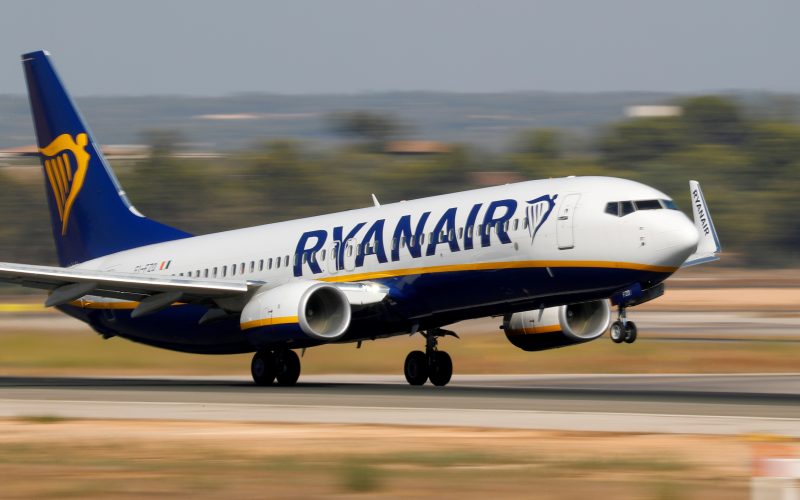Boeing, one of the most iconic names in the aviation industry, has found itself under intense scrutiny following a series of safety failures and troubling whistleblower allegations. The company’s chief executive, Dave Calhoun, has been at the forefront of this storm, facing tough questions from regulators, the media, and the public. This article delves into the recent developments surrounding Boeing’s safety practices, the whistleblower accusations, and the broader implications for the aviation industry.
Background: Boeing’s Troubled Past

Boeing’s reputation took a significant hit following the crashes of two of its 737 MAX aircraft in 2018 and 2019, which resulted in the loss of 346 lives. Investigations revealed that the crashes were caused by flaws in the Maneuvering Characteristics Augmentation System (MCAS), a software designed to prevent the aircraft from stalling. It became apparent that Boeing had failed to provide adequate training and information to pilots about this system. These failures were compounded by allegations that Boeing prioritized production schedules and cost-cutting over safety.
The fallout from these crashes was severe. The 737 MAX was grounded worldwide, and Boeing faced numerous lawsuits, regulatory fines, and a crisis of confidence among airlines and passengers. The company embarked on a lengthy process to fix the issues with the 737 MAX, and the aircraft was eventually cleared to return to service in late 2020. However, the shadow of these incidents continues to loom large over Boeing.
Whistleblower Allegations: A Culture of Fear and Retaliation
In recent months, Boeing has been rocked by a series of whistleblower allegations that have brought its corporate culture and practices into question. Several current and former employees have come forward with claims that the company has fostered a culture of fear, where safety concerns are often ignored or suppressed, and whistleblowers face retaliation.
One of the most notable whistleblowers is Ed Pierson, a former senior manager at Boeing’s 737 factory in Renton, Washington. Pierson has testified before Congress, claiming that production pressures and a chaotic work environment at the factory compromised safety. He has argued that these conditions contributed to the crashes of the 737 MAX. Pierson’s allegations are backed by internal documents and emails that suggest Boeing managers were aware of these issues but failed to address them adequately.
Another whistleblower, John Barnett, a former quality manager at Boeing, has accused the company of cutting corners in its manufacturing processes. Barnett has claimed that faulty parts were installed on aircraft and that employees were pressured to overlook safety concerns to meet production targets. These allegations have raised serious questions about the integrity of Boeing’s quality control and safety assurance processes.
Congressional Hearings: Boeing Chief on the Hot Seat
In response to these allegations and ongoing concerns about Boeing’s safety practices, the U.S. Congress has held several hearings to question the company’s leadership. Dave Calhoun, who took over as CEO in January 2020, has been a central figure in these hearings. Lawmakers have grilled Calhoun on Boeing’s handling of the 737 MAX crisis, its corporate culture, and its treatment of whistleblowers.
During these hearings, Calhoun has faced tough questions about what steps Boeing has taken to address the issues that led to the 737 MAX crashes and how the company is ensuring that such failures do not happen again. He has highlighted several measures Boeing has implemented, including changes to the MCAS system, enhanced pilot training, and improvements to the company’s safety management systems.
However, many lawmakers remain skeptical. They have pointed to continued reports of safety lapses and whistleblower retaliation as evidence that Boeing has not fully reformed its practices. Some have called for stronger regulatory oversight and harsher penalties for companies that fail to prioritize safety.
Boeing’s Response: Steps Toward Reform
In his testimony, Calhoun has emphasized Boeing’s commitment to safety and accountability. He has acknowledged that the company made mistakes and that it must do better. To this end, Boeing has undertaken several initiatives aimed at improving its safety culture and practices.
One of the key steps Boeing has taken is the establishment of a new safety management system (SMS) that seeks to integrate safety into every aspect of the company’s operations. This system is designed to identify and mitigate risks before they become serious issues. Boeing has also created a new Product and Services Safety organization, which reports directly to Calhoun and the Board of Directors. This organization is tasked with ensuring that safety is the top priority in all of Boeing’s products and services.
Additionally, Boeing has launched a series of internal reviews and audits to assess its compliance with safety regulations and standards. The company has also increased its investment in employee training and development, particularly in areas related to safety and quality.
Calhoun has also addressed the issue of whistleblower retaliation. He has stated that Boeing is committed to protecting whistleblowers and that the company has implemented new policies and procedures to ensure that employees can report safety concerns without fear of retaliation. Boeing has set up a confidential reporting system and has pledged to investigate all claims thoroughly and take appropriate action.
The Broader Implications for the Aviation Industry
The issues facing Boeing are not unique to the company. They reflect broader challenges in the aviation industry, where safety must be balanced with the pressures of production schedules, cost control, and market competition. The 737 MAX crisis has underscored the need for a strong regulatory framework and robust oversight to ensure that safety is never compromised.
Regulators around the world have taken note of the lessons from the 737 MAX crashes. The Federal Aviation Administration (FAA) has implemented several reforms aimed at improving its oversight of aircraft certification processes. These include more stringent reviews of new aircraft designs, enhanced collaboration with international regulators, and increased transparency in the certification process.
The European Union Aviation Safety Agency (EASA) and other international regulators have also strengthened their oversight mechanisms. There is a growing recognition that aviation safety is a global issue that requires coordinated efforts from regulators, manufacturers, and airlines.
Looking Ahead: Challenges and Opportunities
Boeing’s path to redemption is fraught with challenges. The company must not only address its internal issues but also rebuild trust with regulators, airlines, and the flying public. This will require a sustained commitment to transparency, accountability, and continuous improvement.
At the same time, Boeing has an opportunity to set a new standard for safety and corporate responsibility in the aviation industry. By embracing a culture of safety, encouraging open communication, and holding itself accountable, Boeing can demonstrate that it has learned from its mistakes and is committed to being a leader in aviation safety.
For the aviation industry as a whole, the Boeing crisis serves as a stark reminder of the importance of vigilance and the need to prioritize safety above all else. It is a call to action for all stakeholders to work together to ensure that the skies remain safe for everyone.
Conclusion
The questioning of Boeing’s chief executive on safety failures and whistleblower practices has shone a spotlight on the company’s internal challenges and the broader issues facing the aviation industry. While Boeing has taken steps toward reform, the road ahead is long and fraught with obstacles. The company’s ability to navigate these challenges will not only determine its future but also influence the broader trajectory of aviation safety and corporate governance.
Boeing’s experience highlights the critical importance of a robust safety culture, the need for transparent and accountable leadership, and the value of protecting whistleblowers. As the company works to regain trust, it must continue to prioritize these principles to ensure that such tragedies are never repeated. For the aviation industry, the lessons from Boeing’s struggles are clear: safety must always come first, and there is no room for compromise when it comes to protecting lives.












